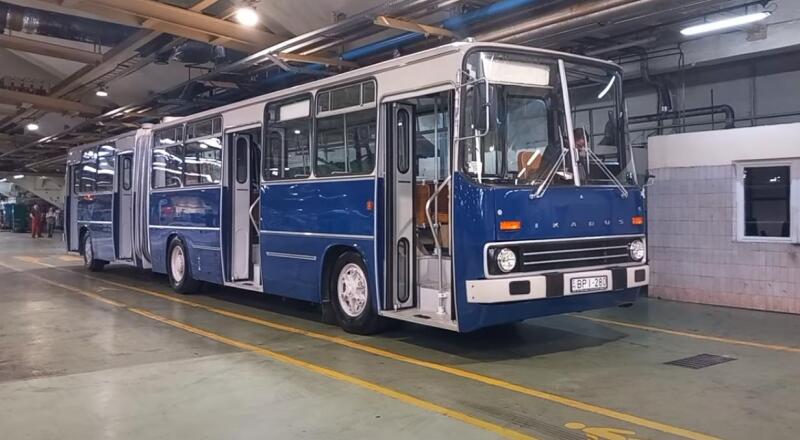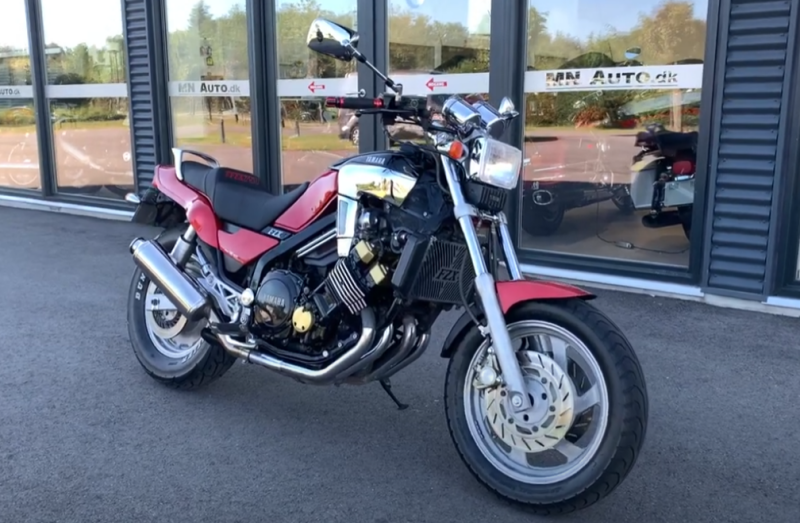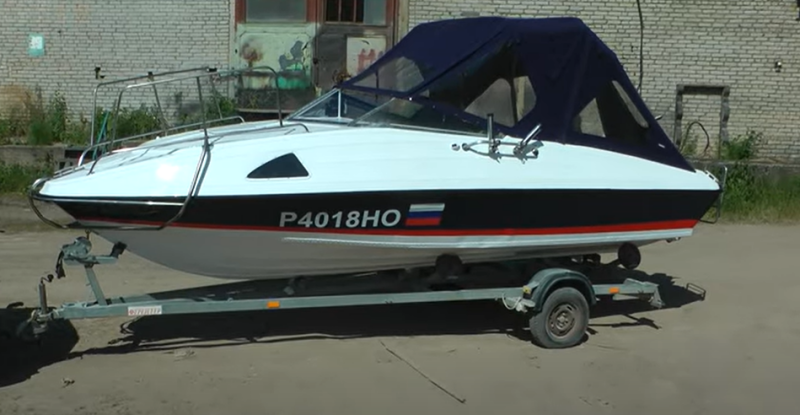Of course, with the advent of the Zhiguli, the AZLK models went into the background - most drivers dreamed of a modern, almost Italian car. Only there weren’t enough of them for everyone, the Soviet people were happy with the Moskvich and Zaporozhets. The latter, by the way, also did not go on free sale.
Light commercial vehicles in the USSR practically did not exist. Moreover, there were no official businessmen in the country. But the IzhAvto plant produced compact delivery vans. Unfortunately, these models did not fall into private hands for a long time.
 An interesting Soviet pickup truck GAZ-21 (that's right, this is not a mistake). Photo: Youtube.com
An interesting Soviet pickup truck GAZ-21 (that's right, this is not a mistake). Photo: Youtube.comAs for pickups, this class of cars was a curiosity in the Soviet Union. The authorities of the country believed that people did not need such models. Although, the inhabitants of the countryside would definitely appreciate this car. But the Moskvich plant never worked for a warehouse anyway - no matter how much they increased production, there were still not enough cars.
A full-fledged pickup truck in the AZLK range appeared after the collapse of the USSR, although it was developed during the existence of a huge country. But in those years there was no time for new models, we had to survive.
History
Pickup trucks on the chassis of serial passenger cars in the USSR periodically came across from about the beginning of the 60s. But these were exclusively home-made products, re-equipped by the forces of repair shops at enterprises. Service cars or decommissioned models that got into serious accidents turned into pickups.
 Even ZAZ was produced in a pickup-type body. Photo: Youtube.com
Even ZAZ was produced in a pickup-type body. Photo: Youtube.comAs a rule, the machines were converted for internal needs. They hardly went to the city. This is explained simply - it would not be possible to register such cars anyway.
But the factories benefited from these alterations:
✅ No need to spend money on new bodywork
✅ Appearance did not matter - it rides well
✅ A pickup often performed the tasks of a full-fledged truck, spending many times less fuel
✅ Compactness allows you to drive into the most secluded corners
The first manufacturer of mass-produced passenger pickups was the IzhAvto plant. Of course, this is a van, but the booth could be removed, getting an open cargo platform. The model was called Izh-2715. This is the same "heel" that has been produced for almost 30 years, since 1972.
At the Moscow plant, design engineers also decided to release their own pickup truck, inspired by the success of their colleagues from Izhevsk. But the new managers of the enterprise, who transferred from the Likhachev Plant, immediately “slaughtered” all the commercial undertakings of Moskvich. Together with the pickup, projects for a promising station wagon and van fell under the "distribution".
 Serial pickup Izh. Photo: Youtube.com
Serial pickup Izh. Photo: Youtube.comOnly in the mid-80s did AZLK return to the development of a pickup truck. In those years, the leadership was loyal to new ideas. It is interesting that initially the commercial vehicle was planned on the chassis of the AZLK minivan. Moskvich had such a project called Arbat. Unfortunately, he did not go into the series, so I had to create a pickup truck on the chassis of the most modern model - AZLK-2141.
The new car was front-wheel drive, which is already unusual for light trucks. But there were no other options - the rear-wheel drive generation of Moskvich was already discontinued.
Problems
Work on Moskvich-2335 began in 1987. It was not so easy to make a serial pickup truck on the chassis of an ordinary passenger car. At first glance, it seems that it is enough to cut off part of the roof and weld the rear doors. Such a scheme is only suitable for a film studio, where the car will be destroyed anyway in the process of shooting.
 Pickup and hatchback for comparison. Photo: Youtube.com
Pickup and hatchback for comparison. Photo: Youtube.comA light pickup needed a frame. This is how the Japanese and Americans build pickup trucks. To carry cargo, you need a base. And the light suspension will not cope. I had to create a cargo platform from scratch, but the engineers did not dare to use the spar half-frame, as they did a few years later in the VIS.
I had to develop a system of load platform amplifiers. The designers combined the spars together. Yes, and the sides had to be strengthened, otherwise they would simply bend and deform.
It's interesting that in the end it all worked out. Moreover, thanks to the efforts of designers, the car looks like a single whole. The platform organically fit into the look. To give the model a certain charm, the cabin wall was placed at an angle.
A lot of time was spent fine-tuning the rear axle suspension. It is clear that the springs had to be abandoned. The solution of the issue suggested itself - to take the springs from the old generations of Moskvich.
 In the 90s, it was better not to leave cargo on an open platform unattended. Photo: Youtube.com
In the 90s, it was better not to leave cargo on an open platform unattended. Photo: Youtube.comImmediately a new problem arose - the selection of suspension stiffness. If you install conventional springs, then an empty car literally jumped on any bumps. If you take fewer sheets - sagged. I had to choose progressive springs. There are two types of sheets, each of them works depending on the load.
Unlike colleagues from Izhevsk, who created their pickup vans on the same wheelbase as passenger cars, Moscow designers decided to do everything correctly, increasing it by 120 mm. As a result, the car could carry up to 640 kg.
Having decided that this was not enough, the designers and designers specially developed a light trailer for their pickup truck. Such a "road train" could carry up to 1,2 tons! The car was shown at the exhibition already in 1988.
The model was prepared for serial production only a few years later. Cars were presented towards the end of 1991, a couple of months before the collapse of the USSR. It was this event that played a key role in the fate of the model.
 Pickup truck with trailer. Photo: Youtube.com
Pickup truck with trailer. Photo: Youtube.comSerial production of the pickup began in 1994. The model turned out to be relevant, although it was not in great demand. It was a Moskvich, and these cars were not quoted by that time. But thanks to the low price and uniqueness, pickups were bought.
Engines
Even during the creation of the model, it was planned to equip it with VAZ-2106 engines. This 80-horsepower power unit was better suited to a truck. Of course, ideally, such a car would fit a motor from the Volga, but it was too heavy for the AZLK-2141 chassis.
Only the collapse of the Soviet Union confused all plans. Automobile factories were forced to survive in the new conditions, supporting partners. "Six" engines had to be replaced by UZAM. We can say that AZLK was lucky - the plant in Ufa just mastered engines with a volume of 1,7 liters and a power of 85 hp. With.
 Engine UZAM with a volume of 1,7 liters. Photo: Youtube.com
Engine UZAM with a volume of 1,7 liters. Photo: Youtube.comAlready at that time, the manufacturer understood that a pickup truck needed a diesel power unit. Only in Russia there was no passenger car of this type at that time, as it is now. Even a full-fledged Gazelle truck was equipped with gasoline engines. But the financial situation of the Gorky Automobile Plant was far better than AZLK.
Subsequently, UZAM engines with a volume of 2335 liters appeared on Moskvich-1,8 pickups. The designers also finalized the checkpoint.
Short career
The first commodity pickups at AZLK appeared at the end of 1993. This is 500 copies - the largest batch in the history of the model. In the future, Moskvich-2335 was produced in small quantities - as needed.
 Fit KUNG left much to be desired. Photo: Youtube.com
Fit KUNG left much to be desired. Photo: Youtube.comSince 1996, pickups have been assembled only singly, usually on order. The last Moskvich-2335s date back to 2001.
The AZLK pickup appeared too late to become popular. If mass production had begun at least in 1986, the model would definitely have become large-scale.
In any case, the pickup truck was produced until the end of the work of the conveyors of the Moskvich plant. This alone speaks of its relevance and relevance.










